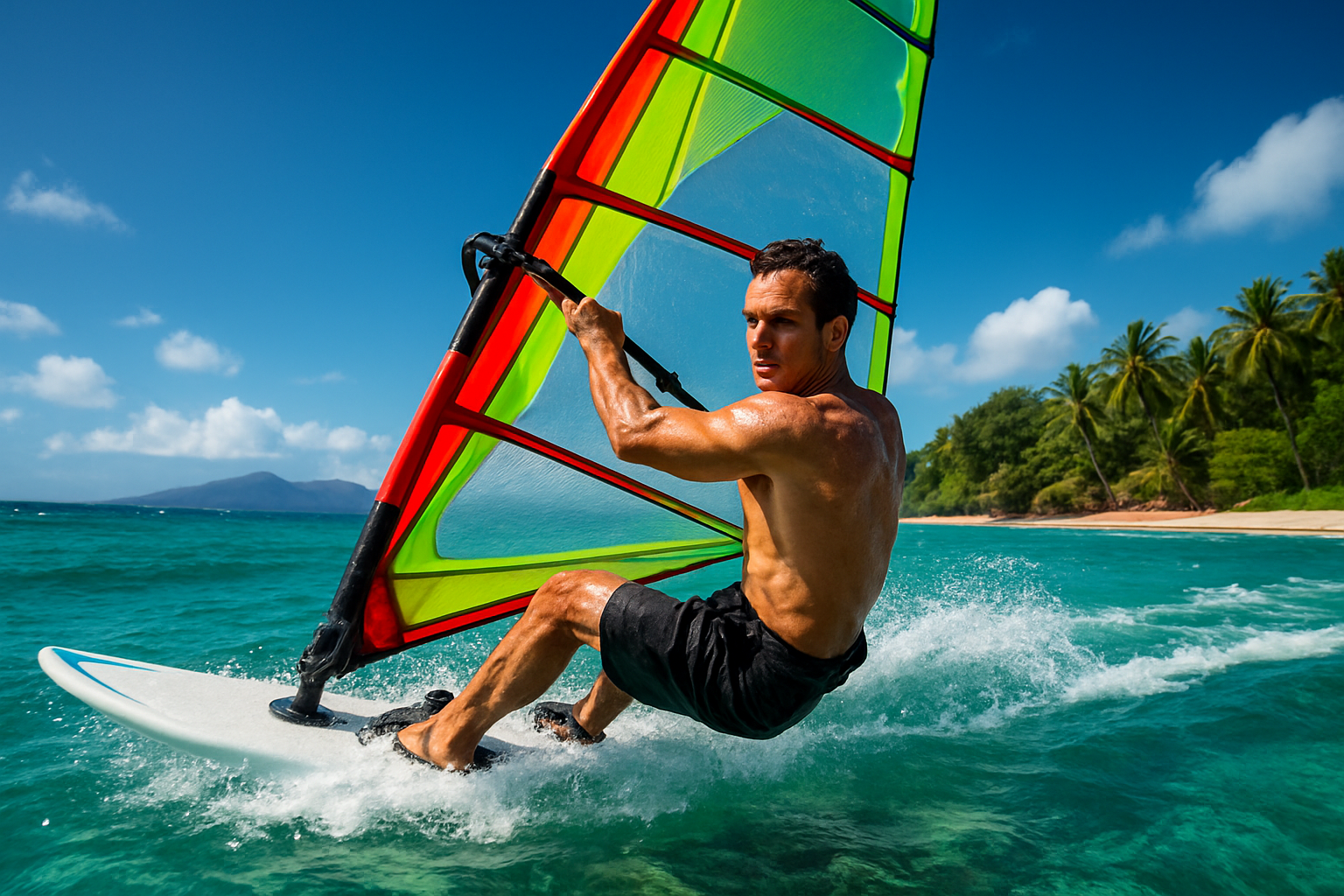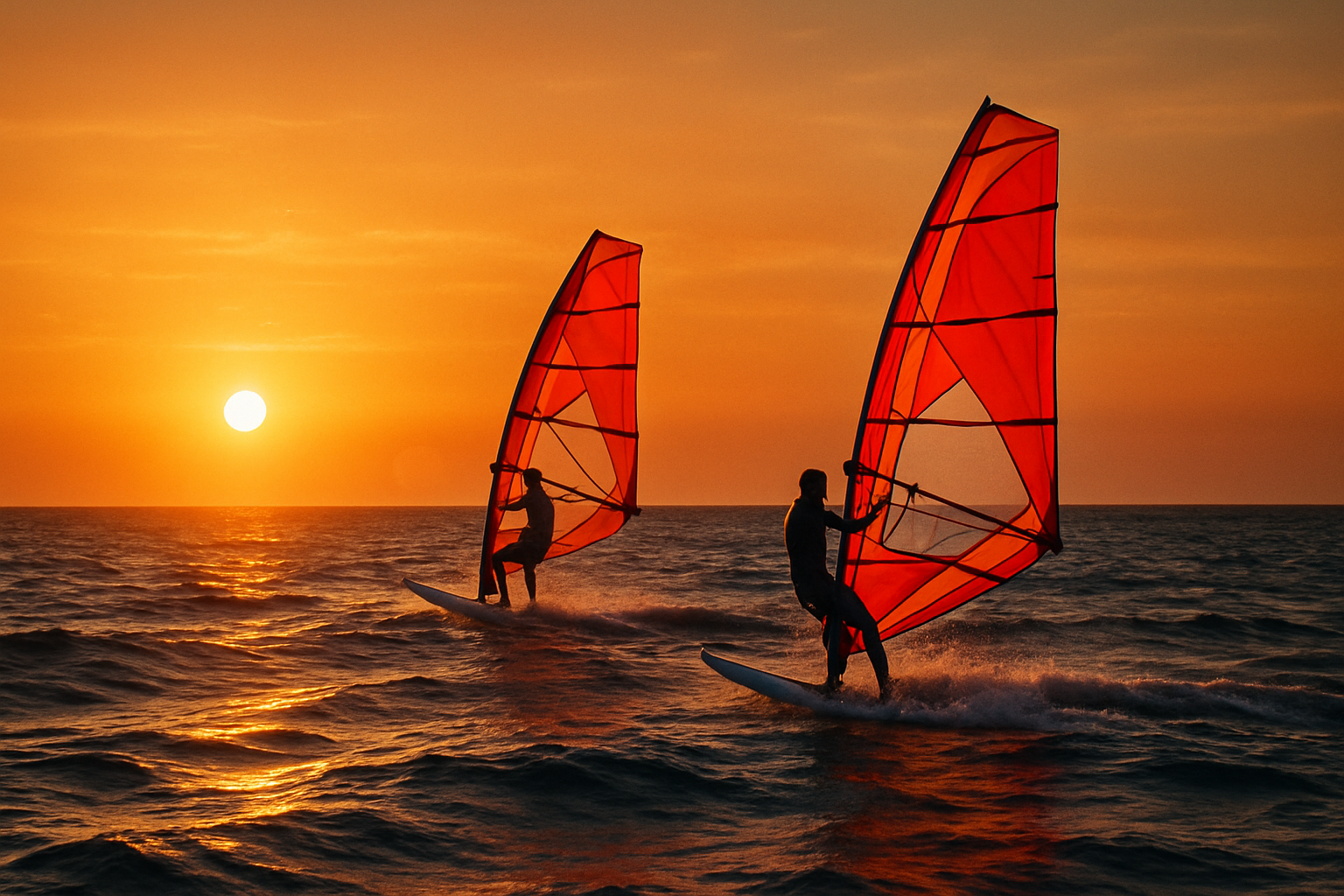Windsurfing requires a lot of practice, and patience, and scuba equipment.
Once you learn the basics you will want to get
yourself a some wetsuit outlet gear, having the proper wetsuit equipemt like snorkel gear, scuba equipemt, wetsuits come in all sizes from child (shorty websuit), youth websuits,and adult websuits. It is advised that you take scuba lessons, as well as windsurfing classes.
Some specialty gear you can consider are wetsuit gloves,triathalon wetsuits, akona wetsuits, henderson wetsuits, wetsuit gloves, you can find everything at wetsuit wearhouse
Load up the Honda Honey, I’m going surfin’
by Chris Costigan
My 21 year-old body has a working relationship with the Emergency Room. I’ve grown accustomed to the firm embrace of concrete and the spirit breaking inertia of tree trunks whose sole purpose is to inflict havoc onto the body. Naturally, as I mature, these asphalt flesh-mutilating fiascoes and slope side traumas begin to produce the sounds of snapping tendons and grinding joints. Of course I could simply renew my membership to “Arthritis Digest” and retire to the porch couch … or… evolve to a more placid fabric of aggression — windsurfing on good ol’ Lake Champlain.

Windsurfing requires a lot of practice, and patience, and scuba equipment.
Once you learn the basics you will want to get
yourself a some wetsuit outlet gear, having the proper wetsuit equipemt like snorkel gear, scuba equipemt, wetsuits come in all sizes from child (shorty websuit), youth websuits,and adult websuits. It is advised that you take scuba lessons, as well as windsurfing classes.
Some specialty gear you can consider are wetsuit gloves,triathalon wetsuits, akona wetsuits, henderson wetsuits, wetsuit gloves, you can find everything at wetsuit wearhouse
Load up the Honda Honey, I’m going surfin’
by Chris Costigan
My 21 year-old body has a working relationship with the Emergency Room. I’ve grown accustomed to the firm embrace of concrete and the spirit breaking inertia of tree trunks whose sole purpose is to inflict havoc onto the body. Naturally, as I mature, these asphalt flesh-mutilating fiascoes and slope side traumas begin to produce the sounds of snapping tendons and grinding joints. Of course I could simply renew my membership to “Arthritis Digest” and retire to the porch couch … or… evolve to a more placid fabric of aggression — windsurfing on good ol’ Lake Champlain.
Windsurfing-body
If I’ve given off the impression that this sport is for those who have been beaten into submission and subsequently softened, I apologize for misleading you. Windsurfing is physically demanding, especially for the cocky neophyte. The simple fact of falling into the water is just easier on the body than the street or East Coast patented hard pack. I’m speaking from experience. I spent the majority of Monday under the wing of Inland Sea Windsurfing Co. instructors Judy Mann and Dan Wheeler. Coming from a skateboarding and snowboarding background, I anticipated windsurfing to be a romp down Cakewalk Boulevard. Man was I delivered a quick dip in the drink. Initially, this sport was nothing short of frustrating. In fact, it is my understanding that this sense of incipient frustration contributed to the sports decline over the last decade. According to Phillip Mann, owner of Inland Sea Windsurfing, the sport took a nose dive in the mid to late 80’s because no instruction was available.
“People would buy a board, try it a couple of times and stick it in the garage,” says Mann. “I see them in there laying in the dust all of the time.”
Lack of available instruction alone wasn’t the only cause for the surfing slump. Expense and attitude both contributed to the sports anti-progress.
In the 80’s, the market was open to a small elite. The going rate for a windsurfer brand board was $1,099. This was virtually the only piece of equipment available and its performance could be described as a vessel geared towards the breath of a loved one’s snore—reserved strictly for a light breeze.
“This thing had a triangle sail and a long boom,” explains Mann. “The sail would fold at ten knots.”
The price and the performance had a tangible effect on the direction in which the sport’s attitude was going. Those who kept their boards out of the corners of their garages began customizing their boards. This fueled a trend for a group of elitists to drive the sport to an aggressive level, daring each other to go faster, bigger and more technical. Granted, this moved the sport along in the realm of technology, allowing for easier assimilation of the sport. By the same token it drove many participants away.
Most things on the brink of extinction experience frantic attempts by active participants or outside interested parties to implement restoration. This has proven to be the case for the fate of this twenty-five year-old sport. Efforts have been made in an attempt to make a beginning windsurfer embrace the sport with more ease. A Mistral WindGlider is a sailboard that caters specifically for first time surfers. This board is inflatable, lightweight and ideal for learning how to navigate the winds. Despite the constant bombardment of sailing jargon and the nature of Harborwatch’s strong sailing concentration, I have zero experience with sailing. However, the WindGlider made this disadvantage obsolete. In fact, after an hour I had grasped the concept of tacking and sail positioning and was itching to ride a real board.
The difference between the Mistral WindGlider and a “real” windsurf board is about as different as the feeling of face planting in the water as opposed to concrete. I spent the greater part of two hours hauling the mast and sail out of the lake. This alone gave me insight into the frustration that primitive windsurfers experienced back in the 80’s. Back in those dark days, a beginner could look forward to pulling out the dead weight of an epoxy mast and a dacron sail (monofilm doesn’t absorb water). My arms, legs and back are still screaming from pulling out a feather weight composite mast and a sail. The actual board demanded more balance than the broad deck of the WindGlider. However, the switch wasn’t that drastic and it took all of 45 minutes to get adjusted. Naturally the WindGlider sail is smaller than that of a traditional windsurfer. The obvious reason for this is to keep the wind from sending the fledgling wind rider off screaming into boat traffic. Manipulating the larger sail was a bit tricky to say the least. The wind was blowing in heavy gusts directly off shore, so it didn’t take me long to get blown a good distance off the beach. However, experience on the WindGlider and solid coaching from Judy and Dan gave me the know-how to execute a proper tack. The difficulty came when I tried to find the zone in which to position the sail in the wind. Whenever a gust came up the sail was ripped from my hand and I became intimate with Lake Champlain. As with all new things, these frustrating thorns are clipped with trial and error. By the time my arms were Jell-o and my back was screaming for Motrin, I was windsurfing.
I’ve been searching for a board sport to replace my endeavors in the world of skateboarding. Although I have yet to try my hand at wakeboading, I became instantly hooked by doing battle on the lake with the wind. The vibe in this sport, at least within the jurisdiction of Lake Champlain, is good and pure. New windsurfers are welcomed with open arms. In fact, this is becoming the trend in the entirety of the sport. “It’s all about not being a wind snob,” explains Mann. “The sport is back to having fun.” Anyone can pick up this sport. In fact, when I was dragging my limp and exhausted body out of the water a young girl was taking to the WindGlider. New boards have been made available to fully plane on the surface of the water in eight to ten knot winds. Tandem boards are in production for those individuals whose relationship is strong enough to perform in unison.
“Tandem boards look difficult to handle,” says Mann. “But it’s very easy and is hysterical. You’ll be laughing the whole time.”
The Inland Sea Windsurfing Co. has complete packages for $799. This package comes complete with a carbon mast and monofilm sail (dead opposite to the $1,099 packaged fossil equipment of past eras). They offer daily lessons and rentals at the Sandbar State Park. For more information call the store at (802) 862-3847 or at Sandbar (802) 893-3011
